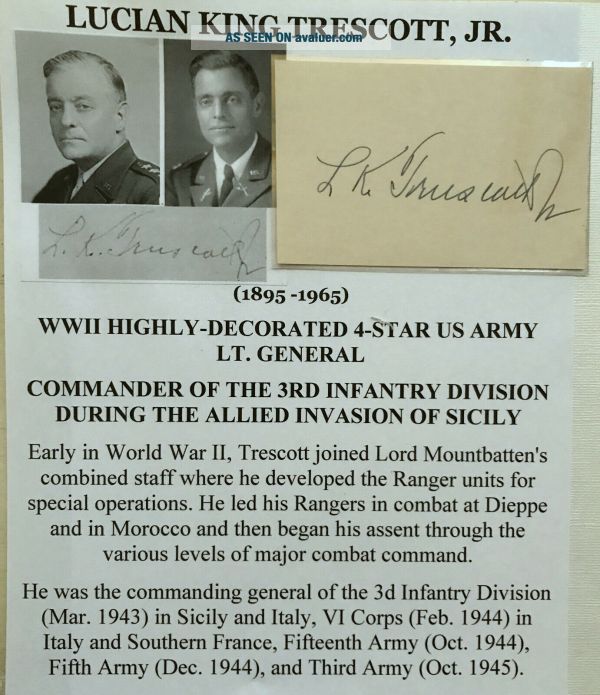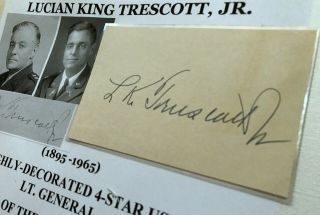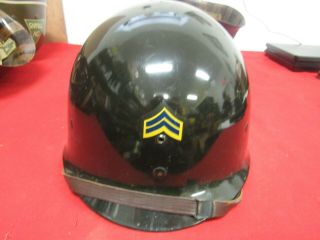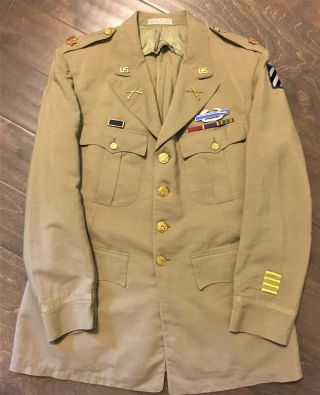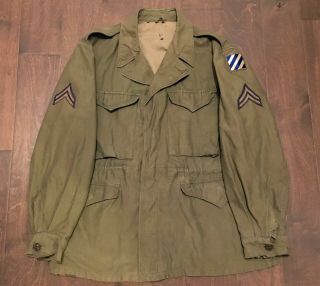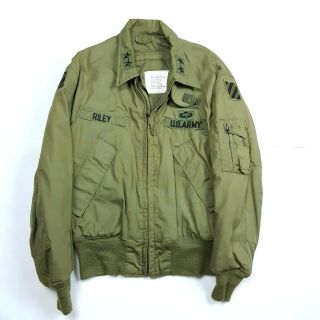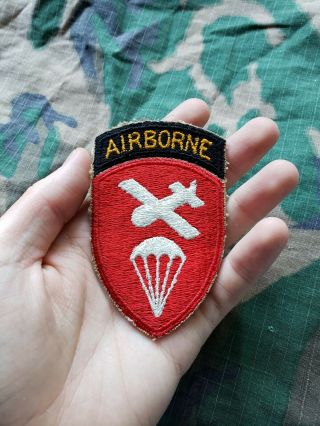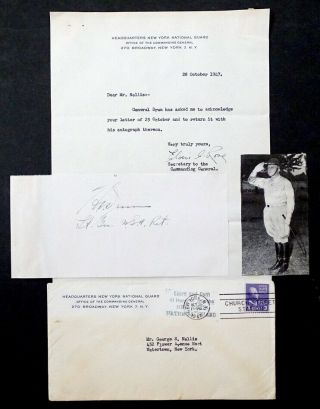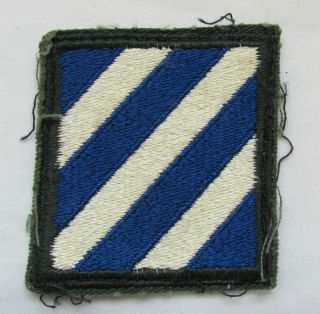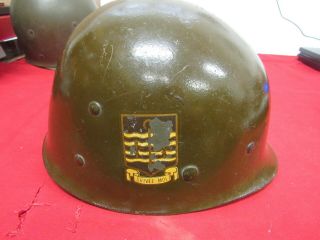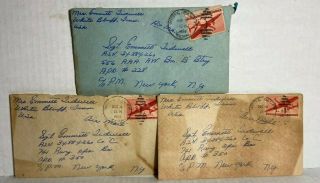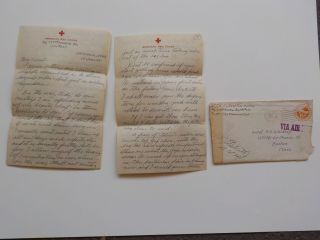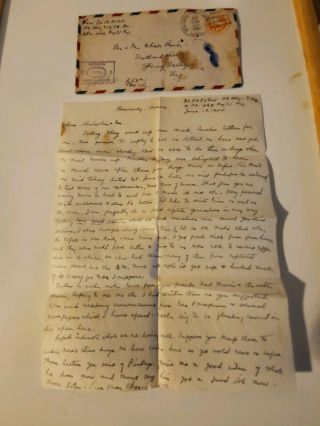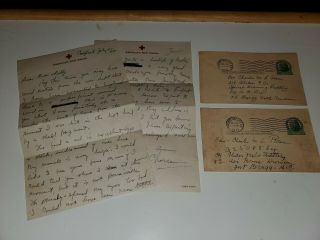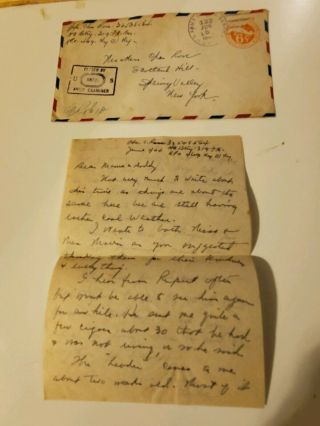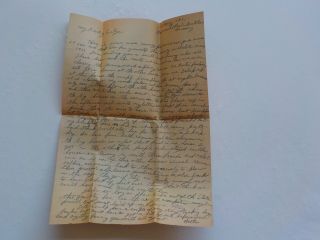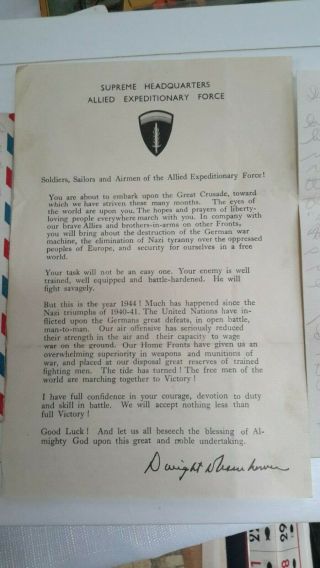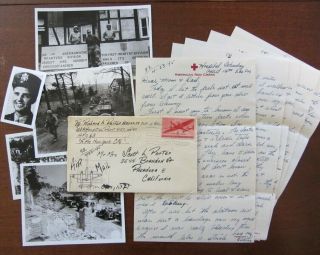WWII US ARMY LT GENERAL COMMANDER 3rd INFANTRY DIVISION SICILY AUTOGRAPH SIGNED
Item History & Price
| Reference Number: Avaluer:25190550 | Region of Origin: United States |
| Theme: Militaria | Modified Item: No |
| Original/Reproduction: Original | Country/Region of Manufacture: United States |
| Conflict: WW II (1939-45) |
“L. K. Trescott, Jr.”The document card measures 4¾”x 3” andis in very fine condition.AN EXCELLENTADDITION TO YOU WWII GENERALS HISTORICAL AUTOGRAPH, MANUSCRIPT & EPHEMERACOLLECTION! <>>::<<>BIOGRAPHYOF GENERAL LUCIAN TRESCOTTGeneral Lucian King Truscott Jr. (January9, 1895 – September 12, 1965) was a highly decorated senior United States Army officer, who saw distinguished active serviceduring World War II.Between 1943–45, he successively commanded the 3rd Infantry Division, VI Corps, Fifteenth Army and Fifth Army. He and Alexander Patchwere the only U.S. Army officers to command a division, a corps, and a field armyin combat during the war. BiographyEarly life and military careerTruscott was born in Chatfield, Texason January 6, 1895, a son of Dr. Lucian King Truscott (1861-1922) and MariaTemple (Tully) Truscott (1866-1938).[1]Raised primarily in Oklahoma, he attended grade school and a year of high school inthe hamlet of Stella, near Norman.[2]At age 16, he claimed to be 18 and a high school graduate to qualify forteacher training, attended the summer term of the state normal schoolin Norman, and received his teaching certification.[2]He taught school and worked as a school principal before he decided to join theUnited States Army in 1917.[3]Enlisting during the American entry into World War I, Truscottapplied for officer training, falsely claiming to be a high school graduate whohad completed the equivalent of a year of college.[4]After completing the officer training camp at Fort Logan H. Roots, In October 1917 he wascommissioned a second lieutenant in the Cavalry Branch.[5]During the war, he remained in the United States to patrol the border withMexico, and served with the 17th Cavalry Regiment at Camp Harry J. Jones, Douglas, Arizona.[5]On March 27, 1919, Truscott married Sarah Nicholas "Chick"Nicholas Randolph (1896-1974), a descendant of Thomas Jefferson Randolph and Thomas Nelson Jr.[6]They were the parents of three children -- Mary Randolph Truscott (1920-1991), Lucian King (1921-2000), and James Joseph (b. 1930).[6]He served in various cavalry and staff assignments between the wars, including completion of the Cavalry Officers Course, followed by assignment asa Cavalry School instructor.[7]He also graduated from the United StatesArmy Command and General Staff College, followed by assignment toits faculty.[8]In the early 1930s, he commanded E Troop, 3rd Cavalry Regiment, whichwas stationed at Fort Myer, Virginia.[9]World War IIIn 1942, Truscott, now a colonel, was instrumental in developing anAmerican commando unit patterned after the British Commandos.The American unit was activated by Truscott (newly promoted to the rank of brigadier general on June19, 1942) as the 1st Ranger Battalion, andplaced under the command of Major William Orlando Darby. In May 1942, Truscott was assigned to the Allied Combined Staff under LordLouis Mountbattenand in August, he was the primary U.S. observer on the Dieppe Raid.The raid was primarily a Canadian operation, consisting of elements of the 2nd Canadian Infantry Division, with twoBritish Commandos attached along with a 50-man detachment from the 1st RangerBattalion. The Rangers were assigned to No. 3 Commando, No. 4 Commando, and 6 Rangers were spread out among the Canadian regiments. This was consideredthe first action by American troops against German forcesin World War II.[10]In July 1942, Truscott was appointed to the staff of IX Corps Area, at Fort Lewis, Washington.[10]On November 8, 1942, now a two-star major general, Truscott led the 9, 000 menof the 60th Infantry Regiment(part of the 9th Infantry Division) and 66th Armored Regiment (partof the 2nd Armored Division) inthe landings at Mehdiaand Port Lyauteyin Morocco, part of Operation Torch under Major General George S. Patton.[11]Truscott took command of the 3rd Infantry Division inMarch 1943, and oversaw preparations for the Allied invasion of Sicily, codenamedOperation Husky. He was known as a very tough trainer, bringing the 3rdInfantry Division up to a very high standard. At the age of 48, he was one ofthe youngest division commanders in the U.S. Army at the time. He led thedivision in the assault on Sicily in July 1943, coming under the command of theSeventh U.S. Army, commanded by Patton, now a lieutenant general. Herehis training paid off when the division covered great distances in themountainous terrain at high speed. The famous 'Truscott Trot' was a marchingpace of five miles per hour over the first mile, thereafter four miles perhour, much faster than the usual standard of 2.5 miles per hour. The 3rdInfantry Division was considered to be the best-trained, best-led division in theSeventh Army. After a brief rest to absorb replacements the division, in mid-September, nine days after the initial Allied landings at Salerno, Italy, came ashore on the Italian mainland, where it fought its way up the Italian peninsula, under the command of the VI Corps, commanded by Major General John P. Lucas.The VI Corps was part of Lieutenant General Mark W. Clark'sU.S. Fifth Army. After crossing the Volturno Linein October and fighting in severe winter weather around the Gustav Line, which saw heavy casualties sustained, the division was pulled out of the linefor rest and relaxation. General Sir Harold R. L. G. Alexander, Commander-in-Chief (C-in-C) of the Allied Armies in Italy (AAI), with Major GeneralLucian K. Truscott Jr., commander of the U.S. VI Corps, in the Anzio beachhead, Italy, 4 March 1944.In January 1944, the division assaulted Anzioas part of the U.S. VI Corps, which also included the British 1st Infantry Division, along with two British Commandos and three battalions of U.S. Army Rangers, Combat Command B of the1st Armored Division andthe 504th Parachute Regimental Combat Team.The operation, the brainchild of British Prime Minister Winston Churchill, was intended to outflank, and potentially force the Germans to withdraw fromtheir Winter Line defenses, which had considerably slowed Allied progress inItaly. Lucas, the corps commander, initially decided not to push inland, asAllied commanders had intended, and Truscott's 3rd Division was soon engaged inbitter fighting and, again, suffering heavy losses as the Germans launchednumerous counterattacks to drive the Allies into the sea. With Clark, the Fifth Army commander, and General Sir Harold R. L. G. Alexander, Commander-in-Chief (C-in-C) of the Allied Armies in Italy (AAI), growingincreasingly worried about the situation, Truscott was appointed as Lucas'sdeputy commander and, after Lucas was dismissed on 17 February, was givencommand of the VI Corps. Truscott was succeeded in command of the 3rd InfantryDivision by Major General John "IronMike" O'Daniel, previously the Assistant Division Commander(ADC). At the age of 49, Truscott was the second youngest corps commander inthe U.S. Army, behind only J. Lawton Collins, then commanding VII Corps in England. Clark, writing inhis memoirs after the war, claimed that he "selected Truscott to becomethe new VI Corps commander because of all the division commanders available tome in the Anzio bridgehead who were familiar with the situation he was the mostoutstanding. A quiet, competent, and courageous officer with great battleexperience through North Africa, Sicily, and Italy, he inspired confidence inall with whom he came in contact."[12]Following Anzio, Truscott continued to command VI Corps through thefighting up the Italian boot, helping in the final Battle of Monte Cassino and the subsequentcapture of Rome, just two days before the Normandy landings.However, his command was then withdrawn from the line to prepare for Operation Dragoon, the amphibious assault on southern France. On 15 August 1944, the VI Corps landed in southern France and initiallyfaced relatively little opposition. The rapid retreat of the German Nineteenth Army resulted in swift gainsfor the Allied forces. The invasion plan was initially for US forces to conductthe initial landing, and Free French forces to conduct the breakout. This waschanged to exploit the withdrawal of the German 19th Army, and US 6th Corpsbegan a pursuit. This resulted in cutting off the escape of the enemy, andtheir total destruction or capture. The Dragoon force met up withsouthern thrusts from Operation Overlord in mid-September, near Dijon. A planned benefit of Dragoon was the usefulness of the port of Marseille.The rapid Allied advance after Operation Cobraand Dragoon slowed almost to a halt in September 1944 due to a criticallack of supplies, as thousands of tons of supplies were shunted to northwestFrance to compensate for the inadequacies of port facilities and land transportin northern Europe. Marseille and the southern French railways were broughtback into service despite heavy damage to the port of Marseille and itsrailroad trunk lines. They became a significant supply route for the Alliedadvance into Germany, providing about a third of the Allied needs. On 2 September 1944, Truscott was promoted to the three-star rankof lieutenant general and in October he was appointed commander of the newlyformed Fifteenth Army, which was largely anadministrative and training command.[13]Truscott's next command came in December 1944. He was promoted to commandof the U.S. Fifth Army[14]in Italy when its commander Lieutenant General Mark Clark was made commander ofthe Allied 15th Army Group, formerly the Allied Armies in Italy (AAI). Truscott led theFifth Army through the hard winter of 1944–1945, where many of its formationswere in exposed positions in the mountains of Italy. He then led the armythrough the Allied Spring 1945 offensive in Italy culminatingin the final destruction of the German forces in Italy. Post-war eraTruscott took over command of the Third Army from General George S. Pattonon 8 October 1945, and led it until April 1946. This command included theEastern Military District of the U.S. occupation zone of Germany, whichconsisted primarily of the state of Bavaria.When the Seventh Army was deactivated in March1946, Truscott's Third Army took over the Western Military District (theU.S.-occupied parts of Baden, Württemberg and Hesse-Darmstadt). Truscott was reassigned inApril 1946 and retired from the Army on September 30, 1947. Will Lang Jr.from Life wrote a biography on Truscott thatappeared in the October 2, 1944, issue of that magazine. After leaving the U.S. Army, Truscott began work on his book CommandMissions, which was published in 1954 (ISBN 0-89141-364-2), and TheTwilight of the U.S. Cavalry (ISBN 0-7006-0932-6). The latterbook was published after his death by his son, Lucian III, in 1989.[15]In 1954, Congress passed Public Law 83-508, which promoted several World War IIsenior officers who had exercised responsibilities greater than their rank; asa numbered army commander, Truscott carried out the duties of a four-stargeneral, and the 1954 law promoted him to general on the retired list.[15]Truscott helped evaluate officers as a member of the War DepartmentScreening Board. Then in 1948–1949, he spent a year as the Chairman of the ArmyAdvisory Board for Amphibious Operations, at Fort Monroe, Virginia. It was between meetings of this board that he began assembling thematerial for his two books.[16]Central Intelligence AgencyIn 1951, Walter Bedell Smith, Director of the Central Intelligence Agency (CIA), appointed Truscott as "Special Consultant to the United StatesCommissioner" in Frankfurt, Germany. However, this was simply a cover forhis real assignment as senior CIA representative in Germany. Truscott had beenplaced in charge of cloak-and-dagger operations in a vital part of Europe. Thisonly came to light after declassification of a secret memorandum in 1994.[17]In 1953, President Eisenhower approved CIA Director Allen Dulles'recommendation that General Truscott be appointed the CIA's Deputy Director forCoordination. This appointment meant that Truscott was now controlling theagency's rapidly expanding network of agents worldwide. His responsibilitiesincluded facilitating the overthrow of governments in Iran and Guatemala.[18]Truscott was involved in planning Operation PBSuccess, the CIA mission tooverthrow Guatemalan President Jacobo Árbenz. According to Harry Jeffers'biography, Truscott was instrumental in convincing Eisenhower to support PBSuccesswith air power.[19]However, another biography by William Heefner suggests that specifics ofTruscott's involvement cannot be substantiated.[20]Truscott left the CIA in 1958. He wrote nothing about his service in theCIA in Command Missions, and there is nothing about his CIA activitiesin his papers at the George C. Marshall Library.[21]Death and legacyTruscott died on 12 September 1965, in Alexandria, Virginia.[22]On 29 April 1966, Truscott Hall, a bachelor officers' quarters at the UnitedStates Army War College, was named after him. On 17 August 1974, [22]Sarah Truscott, his wife, died and was buried next to him at Arlington National Cemetery.[23]In 2012, he was honored at his birthplace of Chatfield.[24]PersonalityTruscott had a very gravelly voice, said to be the result of an accidentalingestion of acid in childhood. He was superstitious about his clothing, andusually wore a leather jacket, "pink" pants and lucky boots incombat. He also wore a white scarf as a trademark, first during the Siciliancampaign.[22]Truscott once said to his son, "Let me tell you something, and don'tever forget it. You play games to win, not lose. And you fight wars to win.That's spelled W-I-N! And every good player in a game and every good commanderin a war…has to have some son of a bitch in him. If he doesn't, he isn't a goodplayer or commander....It's as simple as that. No son of a bitch, nocommander."[22]Truscott was respected by his subordinates. A medical officer in theSeventh Army related stories he'd heard from the men who served under Truscottearlier. Unlike some commanders, Truscott was not noted forself-aggrandisement, [25][note 1]nor did he suffer such from his superiors.[note 2]Others noted he was humbled by the sacrifices those under him had made. Bill Mauldindescribed the time Truscott gave the address on Memorial Day, May 31, 1945, inthe military cemetery at Nettuno, outside Anzio: "He turned his back on the assembled windbags andsparklers and talked to the crosses in the cemetery, quietly, apologizing, andthen walked away without looking around."[26][note 3]In popular cultureTruscott was portrayed by actor John Doucettein the 1970 film Patton. In one scene, as commander of the3rd Infantry Division during the Allied invasion of Sicily, Truscott is shownarguing vehemently with Gen. Patton over the latter's orders pertaining to hisDivision. Decorations and medalsGeneral Lucian Truscott received the U.S. Army's second-highestdecoration, the Distinguished Service Cross, for valor in action in Sicily on July 11, 1943, the second day of the invasion.General Truscott's other decorations include the Army Distinguished Service Medalwith Oak Leaf Cluster, the NavyDistinguished Service Medal, the Legion of Meritand the Purple Heart. [SEE WIKIPEDIA ARTICLE FOR FOOTNOTE REFERENCES]I am a proud member of theUniversal Autograph Collectors Club (UACC), The Ephemera Society of America, the Manuscript Society and the American Political Items Collectors (APIC)(member name: John Lissandrello). I subscribe to each organizations' code ofethics and authenticity is guaranteed. ~Providing quality service andhistorical memorabilia online for over twenty years.~
WE ONLY SELL GENUINE ITEMS, i.e., NO REPRODUCTIONS, FAKES OR COPIES!



